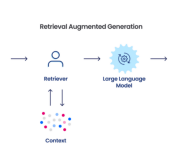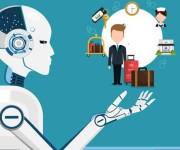Big Data Unleashed: Transforming Industries and Reshaping Our World
In the era of digitization, data has emerged as the driving force behind innovation and transformation. Big data, characterized by its sheer volume, velocity, variety, veracity, and value (the 5Vs), is revolutionizing how businesses operate and how we make decisions. This article explores the profound impact of big data, ranging from its implications to the real-world applications and opportunities it offers.
The Big Data Revolution
Big data is not merely about the volume of data; it’s about the stories that data can tell. It encompasses structured and unstructured data, streaming in at an unprecedented pace. The 5Vs illustrate its essence:
Volume: Gigabytes, terabytes, and even petabytes of data are collected daily, dwarfing traditional datasets.
Velocity: Data streams in real-time, from social media updates to IoT sensor readings, requiring instant processing and analysis.
Variety: Big data is a diverse mix of structured data (like databases), semi-structured data (like JSON files), and unstructured data (such as text, images, and videos).
Veracity: Ensuring data quality is paramount. Big data may contain inaccuracies or biases, requiring careful handling to derive meaningful insights.
Value: The true power of big data lies in extracting value from it, whether through better decision-making, enhanced customer experiences, cost savings, or new revenue streams.
The Impact of Big Data
Driving Informed Decision-Making
Big data has revolutionized decision-making by providing actionable insights in real-time. In the past, decisions often relied on intuition and limited data sources. Today, organizations use big data analytics to make informed choices backed by concrete evidence.
Real-time analytics allows businesses to monitor and respond to events as they unfold. E-commerce platforms, for instance, adjust prices, optimize inventory, and personalize recommendations instantly based on real-time data.
Moreover, data-driven strategies are increasingly prevalent. By aligning their tactics with customer behavior and market trends, businesses can develop better products, launch effective marketing campaigns, and allocate resources more efficiently.
Enhancing Customer Experiences
In the age of big data, personalization is key to delivering outstanding customer experiences. Organizations analyze customer data to tailor products, services, and interactions according to individual preferences.
For instance, e-commerce platforms recommend products based on a user’s browsing and purchase history. Streaming services suggest content that aligns with viewers’ tastes. This personalization fosters customer loyalty and drives sales.
Customer insights derived from big data help retailers optimize store layouts, product placements, and marketing strategies. This fine-tuning improves not only the bottom line but also customer satisfaction.
Predictive Analytics: Anticipating the Future
Predictive analytics, a prominent application of big data, enables organizations to forecast future trends, events, and outcomes. By analyzing historical data and identifying patterns, predictive models can anticipate various scenarios.
In the financial sector, banks employ predictive analytics to assess credit risk, detect fraudulent transactions, and optimize investment portfolios. In healthcare, predictive models help hospitals anticipate patient admissions, leading to efficient resource allocation and better patient care.
Boosting Operational Efficiency
Big data is a catalyst for operational efficiency improvements. It identifies inefficiencies, automates processes, and optimizes workflows, resulting in cost savings and enhanced performance.
Manufacturing companies, for instance, use big data to optimize their supply chain operations. By analyzing data on demand fluctuations, lead times, and transportation routes, they reduce costs and streamline processes.
Utilities leverage big data to monitor energy consumption patterns and predict equipment maintenance needs. This proactive approach minimizes downtime and reduces energy waste.
Data Sources: The Wellspring of Insights
Understanding the sources of big data is crucial in appreciating its impact. These sources provide the raw material for valuable insights :
- Social Media: Platforms like Facebook, Twitter, and Instagram generate vast amounts of user-generated content, including text, images, and videos.
- IoT Devices: The proliferation of Internet of Things (IoT) devices, such as smart sensors and connected appliances, continuously generates data on environmental conditions, machine performance, and more.
- Online Transactions: E-commerce platforms and digital payment systems produce transactional data, offering insights into customer behavior and purchasing habits.
- Sensors and Log Files: Industrial sensors and log files from servers and applications provide operational insights, enabling predictive maintenance and performance optimization.
- Mobile Apps: Mobile apps collect user data, including location, usage patterns, and user interactions, which can be analyzed to improve app functionality and user experiences.
In Conclusion
Big data is not just a buzzword; it’s a transformative force reshaping industries and economies. From better decision-making and enhanced customer experiences to predictive analytics and increased operational efficiency, its impact is profound and far-reaching.
In today’s competitive environment, data-driven insights have become a strategic asset. Organizations that invest in collecting, managing, and analyzing big data are better equipped to adapt to changing markets, meet customer demands, and innovate.
As big data continues to evolve and grow, its impact will only become more pronounced, influencing industries, economies, and societies on a global scale. The journey of big data is a dynamic and ever-evolving one, full of opportunities for those who embrace its potential, for example with a Data Science Course.




























